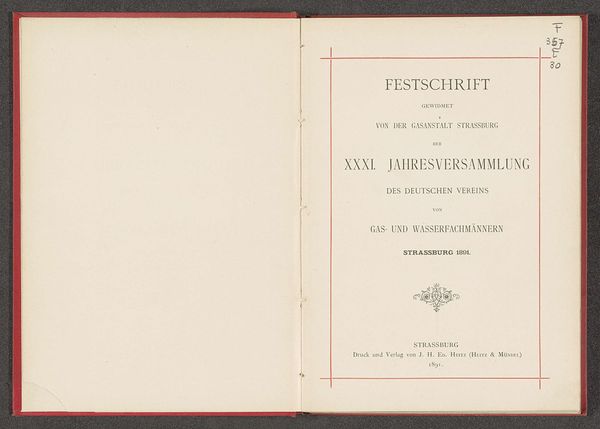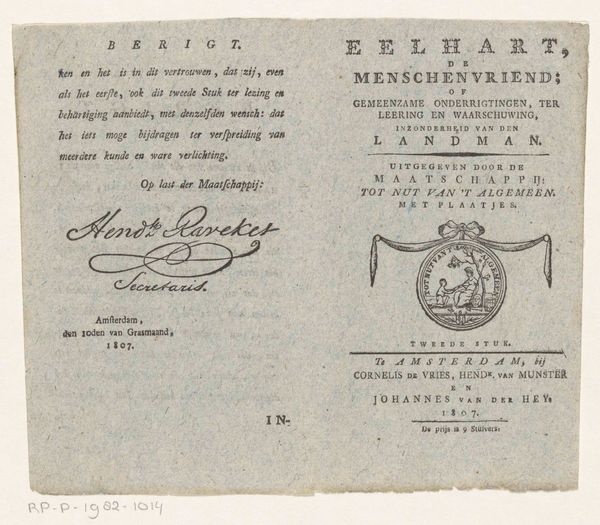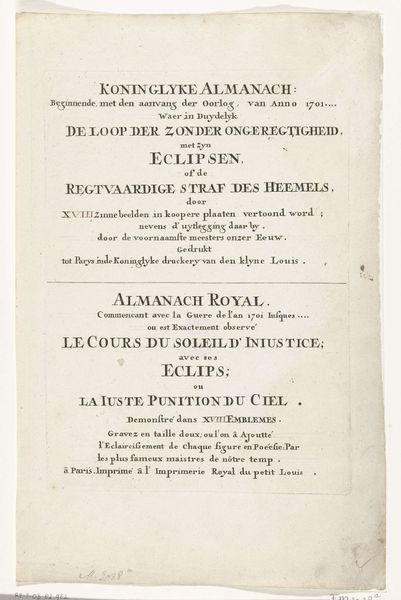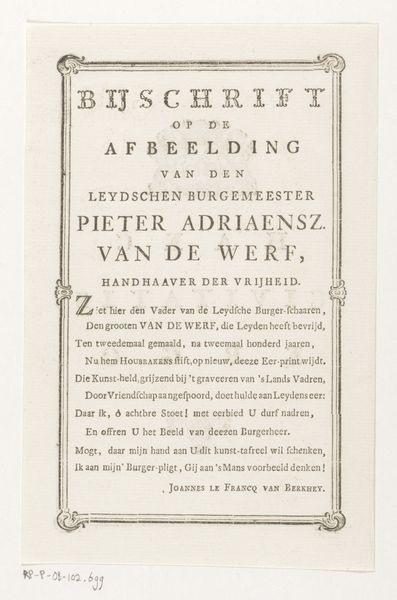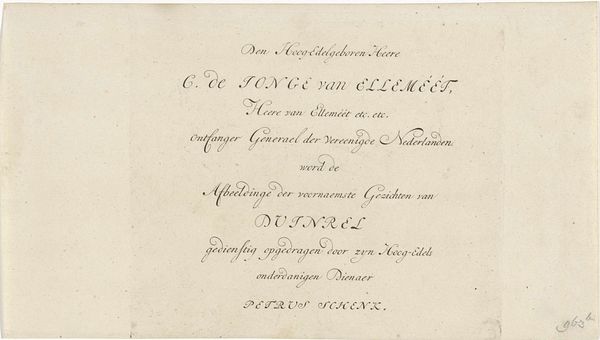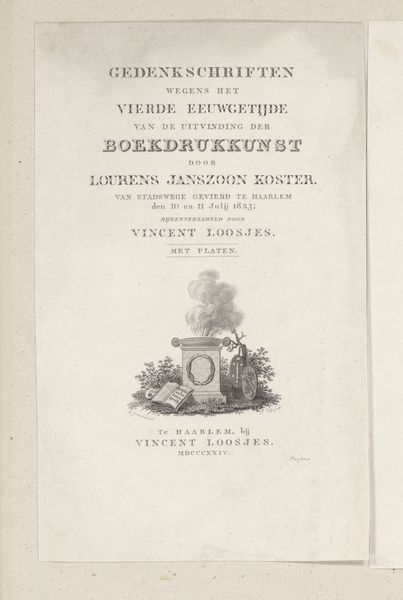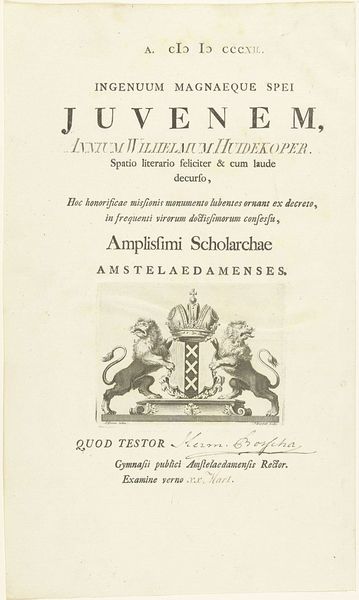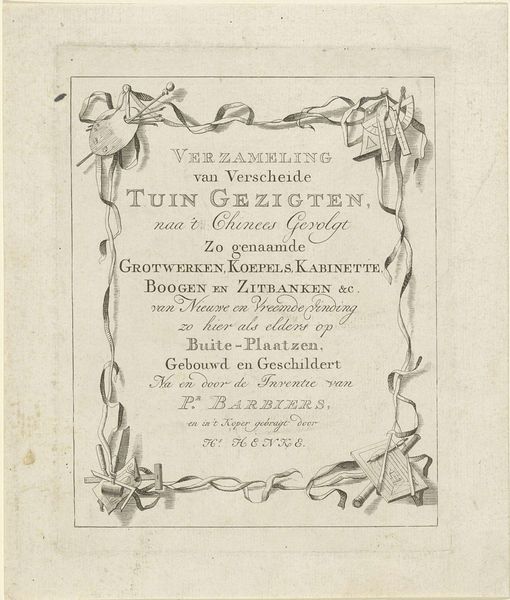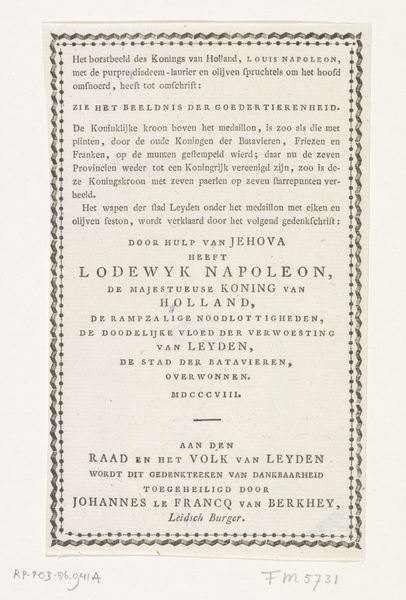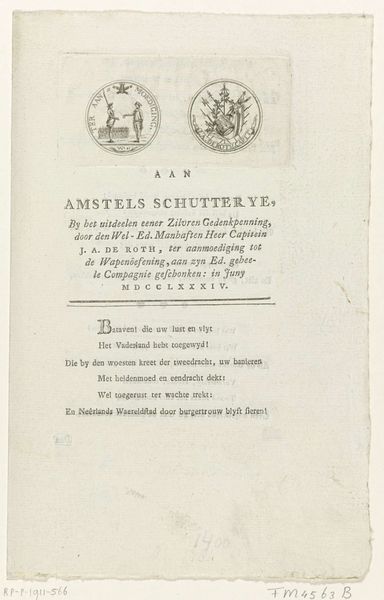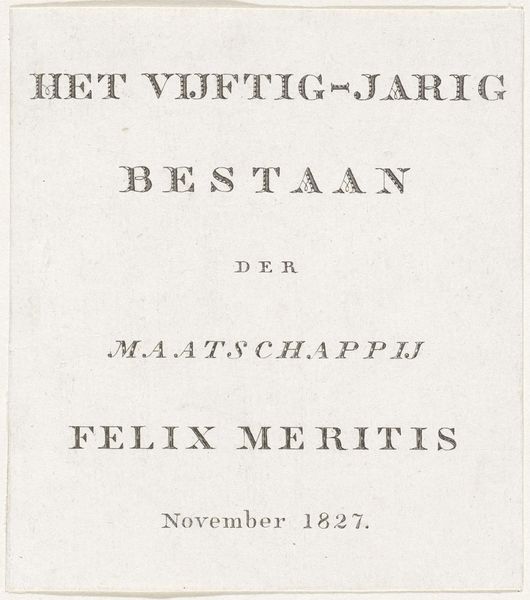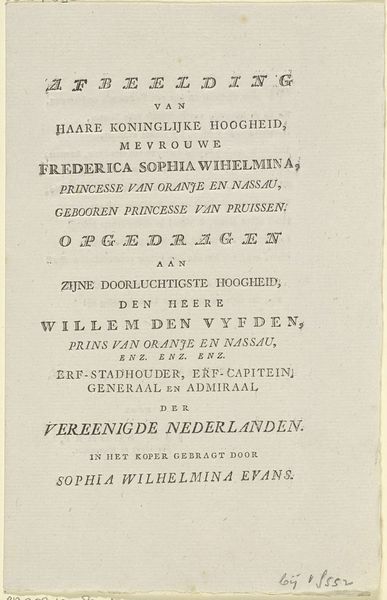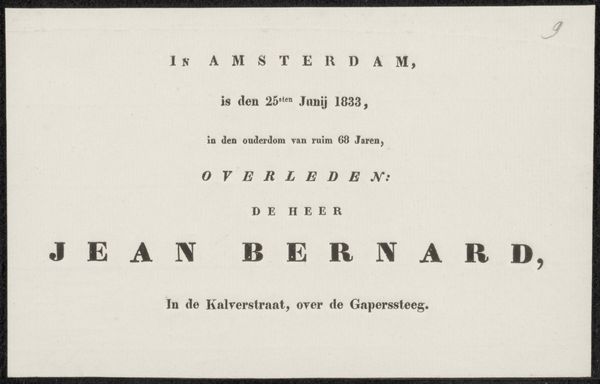
print, paper, typography, engraving
# print
#
light coloured
#
old engraving style
#
paper
#
typography
#
engraving
Dimensions: height 115 mm, width 189 mm
Copyright: Rijks Museum: Open Domain
Editor: Here we have a printed death notice, "Doodbriefje van jonkheer Jan Evert Lewe van Aduart," created in 1832. It's typography on paper, an engraving I believe, and it strikes me as a very formal and public declaration of private loss. How do you interpret this work? Curator: This "Doodbriefje," or death note, operates as both a personal and a political statement. It announces not only the passing of Jan Evert Lewe van Aduart but also his social standing as a Jonkheer and his military service, including being a Commander and Knight. Consider this within the broader social hierarchy of 19th-century Netherlands. The deliberate mention of titles and military accolades speaks volumes about the values upheld by the elite, linking personal identity inextricably with service and nobility. It raises questions about who has the right to have their story told and remembered in such a public manner. Who is afforded such visibility, and who is silenced in the archives of history? Editor: So, it's about more than just remembering someone who died? Curator: Precisely. This seemingly simple announcement serves as a cultural artifact reflecting power dynamics. Notice how “Geen Rouwbeklag”—“No Mourning”—is stated at the end. This implies a stiff upper lip, a stoic acceptance of loss deemed fitting for someone of his station, perhaps also pointing to familial or financial situations. Do you think that sentiment resonates differently today? Editor: Absolutely, it’s so different from how we publicly express grief now. Thinking about this object forces you to really unpack the historical context around grief, social status, and who gets remembered and how. Curator: Indeed. Examining even seemingly minor pieces like this lets us challenge dominant historical narratives, decentering traditional perspectives, and creating space for broader, more inclusive interpretations of the past.
Comments
No comments
Be the first to comment and join the conversation on the ultimate creative platform.
